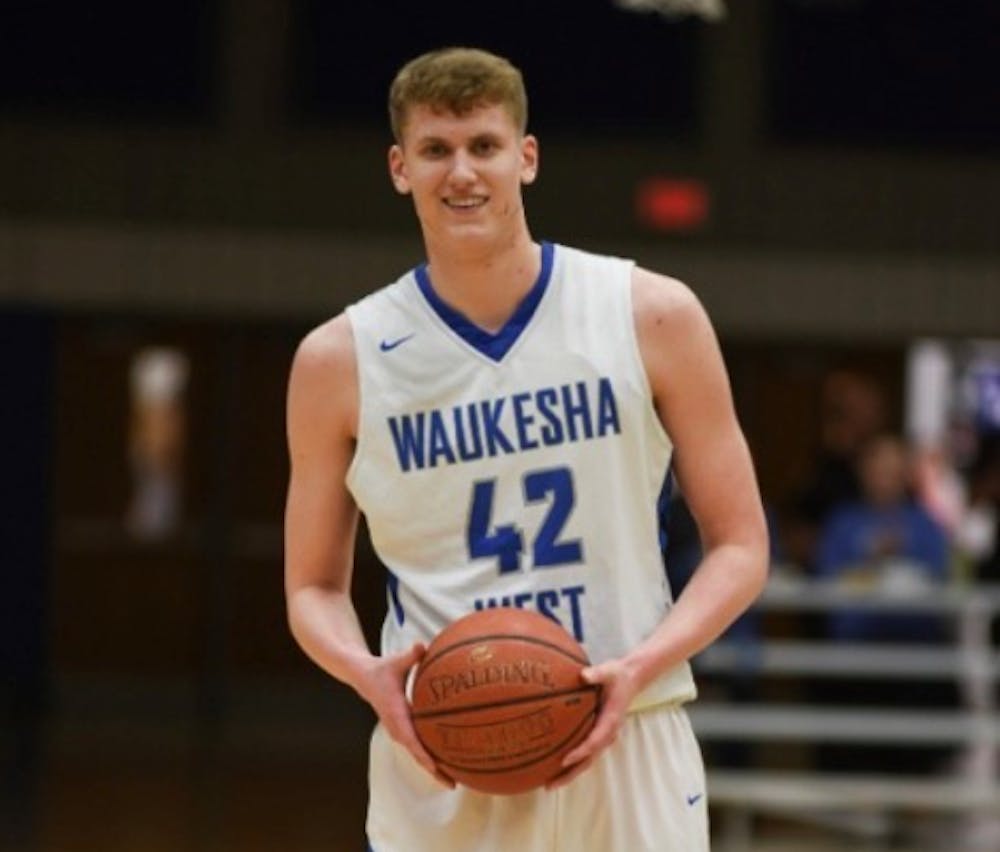David Skogman was 17, standing at the free throw line in front of a dozen family members when his heart stopped beating.
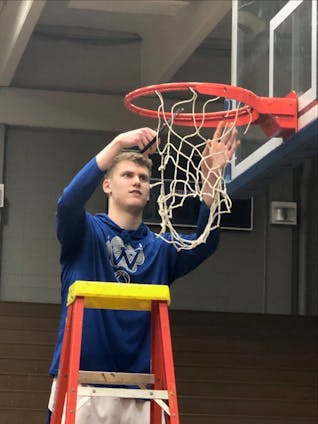
Skogman was a second team All-State selection and averaged 18.6 points, 12.6 rebounds and 3.2 blocks per game his senior season.
His family, friends and teammates were in the crowd that day, as he was playing against his cousin’s team in a summer league game. They watched as he bounced the ball twice. Then, suddenly, his 6-foot-10 frame crumpled, lifeless and immobile.
“All I saw was him just kind of slowly go down to his knees and hit the ground and he wasn’t breathing,” said his mother, Sheryl Skogman, a former nurse.
If his mom and assistant coach Matt Heuser had not been in the gym that day, Skogman might have died. Heuser had just learned to use a defibrillator and used it to shock Skogman’s heart back into rhythm. His mom gave her youngest son CPR until the paramedics arrived.
Skogman woke up hours later, packed in ice.
He felt fine.
He looked completely fine, his doctors said.
But he had lost his Division 1 and NBA dreams on that gym floor. Most college teams wouldn’t risk taking on a player with a heart condition, his doctors told him. Even once he got an electronic implant to keep his heart from stopping again, coaches wouldn’t want him, they said.
“[The doctor] said I would be lucky to play my senior year and that all my college scholarships would be taken away,” said Skogman. “I just sat there by myself and was crying, it was a very low point.”
Sudden cardiac death (SCD) is estimated to afflict anywhere between 1 in 23,000 to 1 in 300,000 teen athletes. It’s still a mystery why it happens.
When it does, it is often fatal and always news.
In 2018, forward/guard Zeke Upshaw, a 26-year-old member of the Grand Rapids Drive, a G-League team associated with the Detroit Pistons, collapsed during a game and died two days later. His family filed a federal wrongful death lawsuit against the NBA and the Pistons because no one gave him CPR or used a defibrillator to revive him. The family settled the lawsuit last year, but continues to work to educate the public on how to prevent SCD.
Skogman was luckier than Upshaw. Both his mom and his assistant coach knew what to do.
In his hospital room, Skogman knew he was lucky. He just couldn’t believe his prognosis.
Basketball was his life and while he believed in hard work, he had always thought his ability was something he could rely on. He wanted to study business administration and possibly break through into a finance-driven career, like his father. But really, he always had a dream to play in the NBA or overseas.
A devout Christian, he believed he would find a way.
Then, nine months after his cardiac arrest, Jim Whitesell, UB’s head basketball coach, called.
Whitesell liked Skogman’s offensive play; his shooting ability for a player his size was unusual. He wanted him on the team and flew to Waukesha, WI, to watch him practice.
This year, Skogman, who has a cardiac device implanted in his chest to keep his heart from stopping again, is set to make his debut for the Bulls after redshirting last year. He’s a lengthy forward, but can shoot the ball at a higher clip than most his size.
His journey from hospital bed to Buffalo is a remarkable story, one Skogman likes to tell because it reminds him how much he has grown as a person and how suddenly life can change.
How Skogman came back to life
Skogman can only play because of a mini defibrillator, the size of a deck of cards, implanted close to his heart.
The device, known as an implantable cardioverter defibrillator, contains a computer that tracks his heart rate and rhythm. If his heart beats too fast or stops — as Skogman’s did — it delivers a shock to set it back into rhythm. Skogman’s father calls it a “super pacemaker.”
Every month, about 10,000 people receive an ICD in the U.S., according to the American Heart Association. And of the 350,000 people who — like Skogman — experience cardiac arrest outside a hospital, only around 10% survive.
“There was a kid across town from me, his name was Kai Lermer, that maybe six or seven months after me had the same thing happen to him, playing basketball, but ended up passing away,” Skogman said.
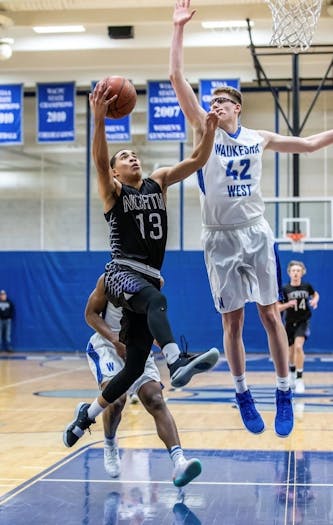
“I really shot up my sophomore year,” Skogman said. “I grew like five inches — from like 6’1”, 6’2” to like 6’7”, and then to 6’10” my junior year.”
Skogman knows he’s lucky. But it was hard to accept his heart had failed him. He was a healthy 17-year-old athlete. How could that have happened?
“He had gotten fouled and he went to the free throw line,” his mother, Sheryl Skogman, said. “He bounced the ball twice, and all I saw was him just kind of slowly go down to his knees and hit the ground and he wasn't breathing. Within eight minutes the paramedics were there.”
No one could believe it.
Even in the hospital, he felt ready to resume his life.
“I was supposed to go play a tournament the next weekend and I thought I was just going to leave the hospital that night, but I think I ended up there for two weeks and had to come back for surgery,” Skogman said.
The surgery was five hours long.
His basketball career was no longer guaranteed.
“It was heart wrenching,” his mother said. “But also in true David fashion, within a half an hour he said, ‘I’m going play, I’m going to prove everyone wrong.’”
He missed three months of play.
When he did make it back, he was terrified.
‘This is what I was made to do’
Skogman walked onto the court his first day back and felt a surge of contradictions.
“It was very surreal,” he said. “I was very emotional when I went through all that stuff. I was just so happy to be able to be on the floor again and just be able to play.”
He remembers his parents getting “very emotional” and crying in the stands.
“I didn’t cry but I did have a little bit welling up in my eyes, but that’s about it,” he said.
Skogman was on the bench for tip-off, but remembers the moment his coach waved at him to get him in the game.
“Before I went in, I was at the scorer’s table and my heart was racing. I was really freaked out and scared,” Skogman said.
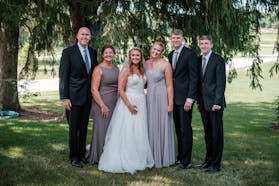
David, one of four kids in the Skogman family, was a healthy baby like his brother and two sisters.
The last memory he had being on a basketball court, was the day of his cardiac collapse.
“I remember like five seconds of when I first came up again,” Skogman said. “I just remember my mom was kneeling right next to me because she was the one who had done the CPR.”
Moments after his unfamiliar wave of emotions, he regained his confidence.
“The first possession I got in, I shot a three-pointer and I made it. At that point I was like, it’s the same thing, I’m still hooping,” Skogman said. “From that point on, I didn’t really care.”
His doctors initially put him on a minutes restriction. They wanted to make sure he was able to compete and get used to the ICD before letting him go back to unrestricted play.
The ICD took some getting used to, but Skogman says it’s his new normal.
“At first it kind of bugged me a bit, but now its a part of me,” said Skogman. “It shocks me every night while I’m sleeping. It doesn’t wake me up, but it beats my heart for about 30 seconds and sends [the information] off to a doctor to see if I had any irregular heartbeats or problems throughout the day.”
Skogman says he wears a pad over his chest when he plays so the ICD doesn’t get hit. To date, Skogman’s only trouble with his ICD is going through metal detectors when traveling.
“He carries a card with him so they do not put a wand over [the ICD], and have him go through a different line,” his father said.
Life before a major upheaval
Skogman was born long.
He was tall in the womb.
“I just remember when we had his ultrasound done at 20 weeks,” his mom said. “[The] sonographer was kind of laughing. She said, ‘I’ve got to go back and repeat some of these measurements because his femurs are so long.’ She came back and said, ‘Oh my gosh his femurs are that long.’”
He was a tall baby and adolescent.
“He was always 110th percentile,” his mom said. “Always, always, always since he was a baby.”
Skogman didn’t have a history of heart issues growing up and was a very active child.
“I would say growing up, he was into a lot of different sports. He was just very active and liked to do a lot of different things. He golfed, played baseball and he was a swimmer,” said his mother.
All of which made the cardiac arrest so surprising.
David Skogman was born to Brad and Sheryl in Waukesha, WI. David, one of four kids in the Skogman family, was a healthy baby like his brother and two sisters. The only difference with David was that he was “very long,” according to his mother.
As a teen, he just kept growing.

“I just remember when we had his ultrasound done at 20 weeks,” his mom said. “[The] sonographer was kind of laughing. She said, ‘I’ve got to go back and repeat some of these measurements because his femurs are so long.’”
“I really shot up my sophomore year,” Skogman said. “I grew like five inches — from like 6’1”, 6’2” to like 6’7”, and then to 6’10” my junior year.”
Skogman stood out to varsity coaches during his freshman year. After going winless halfway through the season, the Waukesha West varsity team added Skogman to its squad, where he played the remainder of his high school career.
Skogman’s inspiration to play basketball in college came from his father playing Division III basketball at the University of Wisconsin-Oshkosh.
Skogman nurses NBA dreams, but says if basketball doesn’t work out he’ll become a financial planner. He’s a strong student and likes math.
“My dad did finance so I’m just following in his footsteps,” Skogman said. “I’ve just always been good with numbers and stuff like that.”
Skogman stood out to college scouts for his height and shooting ability. He was a second team All-State selection and averaged 18.6 points, 12.6 rebounds and 3.2 blocks per game his senior season.
Moving on to the University at Buffalo
Skogman never considered coming to UB until Whitesell called.
“It was right after he got his job,” Skogman said. “They already had some guys committed, but if they had a player decommit, I would be number one on his priority list.”
Luckily for Skogman, a couple players did decommit, prompting Whitesell to fly out and see Skogman play.
“It was just me, my dad and my brother,” said Skogman. “I was just getting shots up at the high school, nothing too serious.”
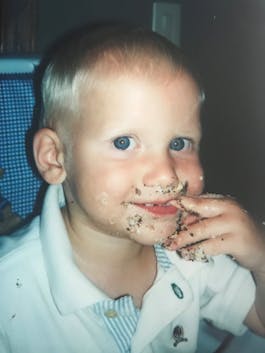
“I would say growing up, he was into a lot of different sports. He was just very active and liked to do a lot of different things. He golfed, played baseball and he was a swimmer,” said his mother.
But for Whitesell it was enough to offer him a spot on the roster. A player with an ICD was not new for the Bulls.
“Justin Moss played here under the same situation and was MAC Player of the Year,” Whitesell said.
The ICD was not an impediment.
Moss had an ICD planted in his chest in 2011 and was recruited by former head coach Nate Oats in 2013. Skogman found inspiration in Moss’ story, and figured if Moss could do it, so could he.
His parents agreed, saying it brought “some comfort knowing that [UB] previously had an athlete with [an ICD].”
Whitesell doesn’t see the ICD; he sees the dedicated player who redshirted his first year and got stronger.
“He loves working in the weight room with Sean Conaty, our weight coach,” said Whitesell.
Whitesell says because Skogman redshirted, “he’s so far ahead of the average freshman, [since] he has experience and has practiced.” Skogman will join a crowded frontcourt that already features senior Dominic Johnson, junior Josh Mballa, sophomore LaQuill Hardnett and senior Brock Bertram.
Skogman was recruited for his offensive skills, but recognizes he can improve on the defensive end. Whitesell compares Skogman to 2020 NBA Finals standout Duncan Robinson of the Miami Heat. Skogman is taller than the 6-foot-7 Robinson, but possesses a similar ability to shoot the ball and space the floor, Whitesell said. He sees this as a boost to the Bulls’ offense this year.
Skogman is ready to make an impact for the Bulls this season and for years to come.
“I’m a Christian and I truly believe that things happen for a reason,” Skogman said. “I want to leave a legacy here. I want to try to make this a better place as much as I can.”
His parents said it simply.
“He believes that he belongs there. He is ready to play.”
Robby Salisbury is an assistant sports editor and can be reached at robby.salisbury@ubspectrum.com and on Twitter @SalisburyRobby

